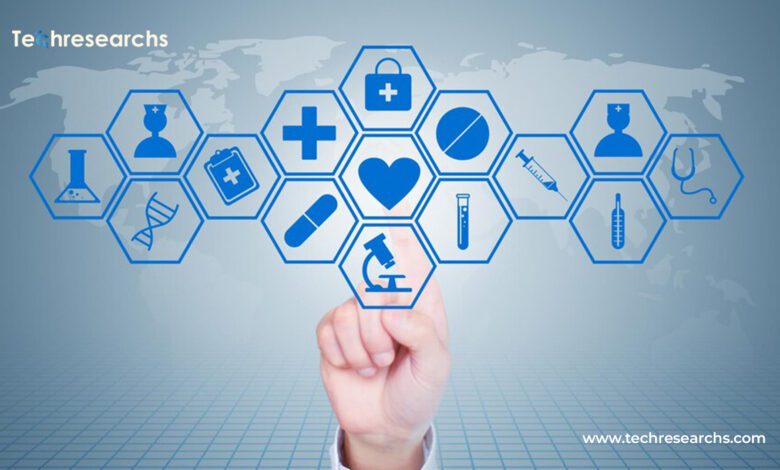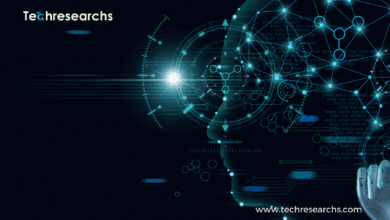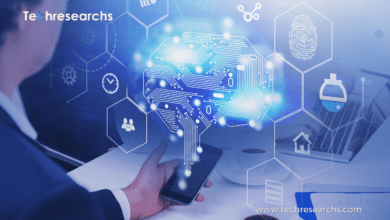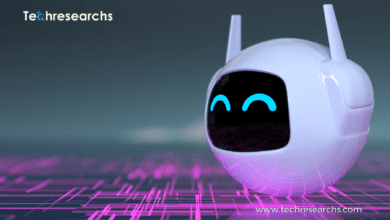How AI is changing healthcare organizations


AI in Healthcare: Modern technologies have an influence on the healthcare system as well as on therapeutic procedures and treatment regimens.
Artificial intelligence is currently being increasingly incorporated into many fields, with its potential applications in medicine growing yearly.
The use of AI in clinics nowadays is no longer novel; rather, it has become a mainstream technology that has changed how healthcare institutions operate.
AI and big data analysis technologies are mostly used to reduce medical expenses and improve healthcare services.
For instance, it has been calculated that 15% of instances require doctors to review the patient’s records three months after the initial session.
Compared to paper charts housed in an archive, digital health records kept in the cloud are simpler to explore.
Triage:
Accurately determining who needs assistance right away and who can wait is one of the key issues that must be swiftly handled when individuals seek medical care. Artificial intelligence (AI) tools actively promote this triage-style sorting process.
Babylon Health created one such computerized triage system that aids in the analysis of patient contact center demands [1].
As a consequence, some patients are counseled to seek quick care, while others are suggested to study more about their illness and its symptoms (i.e., their cases are considered non-emergent).
The technology is now in use by the UK’s National Health Service, and it has already reduced the cost of pay for contact center employees.
Another such is the collaborative triage optimization initiative that GE Healthcare and the John Hopkins Hospital put in place. A bed is provided to emergency department patients 38% faster [2] because to the introduction of AI into triage processes.
Changing to digital docs:
The healthcare systems of many nations actively include technology that can analyze vast volumes of data. South Korea, which started the digitization of medical records back in 2003, is one of the nations showing the most development in this field.
The first “paperless” hospital was Seoul Bundang Hospital, and by 2022, over 90% of national hospitals had implemented comparable procedures [3].
One of Bundang’s most important innovations is its BESTCare 2.0 system, which quickly tracked down all contacts of affected people during the first coronavirus outbreak in March 2020, enabling the avoidance of a complete lockdown.
My HealthWay is an app that assists in managing three sizable databases: immunization history, medication data, and medical check-up data gleaned from national health insurance records [4].
The patient may check the dates, reasons for, and outcomes of their previous medical appointments, and the physician can view the patient’s whole medical history regardless of which clinic they visit. By 2023, the system is anticipated to be fully integrated.
Diagnostics:
The most potential use of artificial intelligence and supercomputers in medicine is the diagnosis of various diseases. The benefits are obvious: electronic equipment performs better, reduces the risk of mistakes by doing away with the human element, and is more cost-effective to utilize because robotic diagnosticians don’t require payment.
On the other hand, a lack of human understanding might be a disadvantage since AI can miss a unique situation that a qualified expert could diagnose.
Additionally, there is less trust in machine-generated diagnoses than in diagnoses provided by human doctors [5]. Additionally, software expenses continue to be expensive.
The introduction of IBM’s Watson supercomputer is arguably the most well-known instance of AI integration in the medical field.
When utilized to locate and examine the data of significant cancer treatment facilities in 2015, the device that produced remarkable results in other fields failed to do so. The tasks that Watson was supposed to do proved to be too difficult for the supercomputer.
But this launch ended up being a turning point because, without IBM’s tale, following diagnostic and analytical systems would have likely had less success.
Incorrect diagnoses are a serious problem. 10% of patients with cancer, infections, or cardiovascular illnesses are misdiagnosed, according to experts at the John Hopkins University School of Medicine, which results in ineffective therapy and further health issues [6].
While most mistakes in the diagnosis of infections are caused by uncommon illnesses, mistaken diagnoses of certain cancers occur more often.
One of the most important diagnostic tools was created by Zebra Medical, an AI business with headquarters in Israel, and is used by doctors in numerous nations to examine CT images and identify breast, liver, or lung cancer.
Zebra suggested hospitals shift all of the algorithms to the cloud in order to save operating expenses and streamline the process rather than paying to host their computersThe cost of creating and interpreting a scan will thereafter be $1 [7].
Individualized care:
A few years ago, the trend toward more individualized care began to emerge; today, it appears clear that no one generic therapy would work for everyone.
Medical prescriptions are more effective and accurate thanks to artificial intelligence, which also improves surgical care. For instance, Accuray’s CyberKnife enhances surgical precision by analyzing the patient’s bodily details and the position of the tumor to lessen the painful nature of surgical treatments.
Vicarious Surgical also created a useful tool that combines the benefits of robotic surgery, artificial intelligence, and virtual reality to execute the least intrusive procedures.
Optimization of hospital work:
A medical facility is a sophisticated machine that depends on the work of many different staff members, including physicians, nurses, and other medical professionals. Its steady operation is a must for prompt and accurate medical aid.
One of the most well-liked AI and ML-based technologies in use in the US, AKASA has already been incorporated into hundreds of hospitals around the country [8].
It may be tailored to fit the needs of a particular medical facility. For instance, by automating claim handling, the system increases the number of handled claims while cutting the processing time per claim from seven minutes to one. The medical staff can concentrate on the patients and their issues instead of wasting time on paperwork.
Utilizing AI capabilities for patient routing and tracking hospital personnel’s whereabouts is another component, which is particularly pertinent for large medical institutions.
Numerous clinics currently utilize indoor navigation applications to direct patients to the appropriate location in the most efficient way.
As a result, patients are less likely to get lost in a hospital, be late for an appointment, or simply not show up at all. According to research, over 85% of people need to ask staff members or other patients for directions.
A striking illustration of the use of several cutting-edge technologies, including artificial intelligence, is provided by Yongin Severance Hospital [10].
It offers 5G coverage, allowing students or interns to see real-time feeds of intricate procedures in a classroom or video hall without interruptions from signal snarls or image quality reductions.
A worker’s whereabouts, the operations a patient has undertaken, and the outcomes of recent exams or tests may all be found out at any time thanks to the internal monitoring system.
This rule is applicable to both individuals and medical technology, such as ultrasound scanners. A surveillance system makes it easier to eliminate unnecessary moves (there is no need to waste time looking for someone or anything) and minimizes human contact, which is important given the current coronavirus outbreak.
In addition to receiving top-notch care, hospital patients may benefit from a “virtual visit system” that allows them to stay in touch with loved ones even if they are unable to see them personally.
Clinical trials:
Clinical trials are another area where AI is being used, with computers already researching novel medications, repurposing old ones, and identifying people who fit the trial’s requirements.
For instance, researchers at Mount Sinai Medical Center used an AI-assisted topological data analysis to segment patients with type 2 diabetes into three subtypes based on their genotype information and medical records, and forecast how each subtype would react to the drug during clinical trials [11].
The OPYL company created yet another remarkable breakthrough. It examines social media information to find people who are more likely to develop neurological diseases like Alzheimer’s.
Even while those decisions ultimately rest with human professionals, the most recent technologies can cover as much data as possible and guarantee that no crucial piece of evidence is missing.
Read more about Advancing Biotechnology: The Role of Artificial Intelligence in Progress







